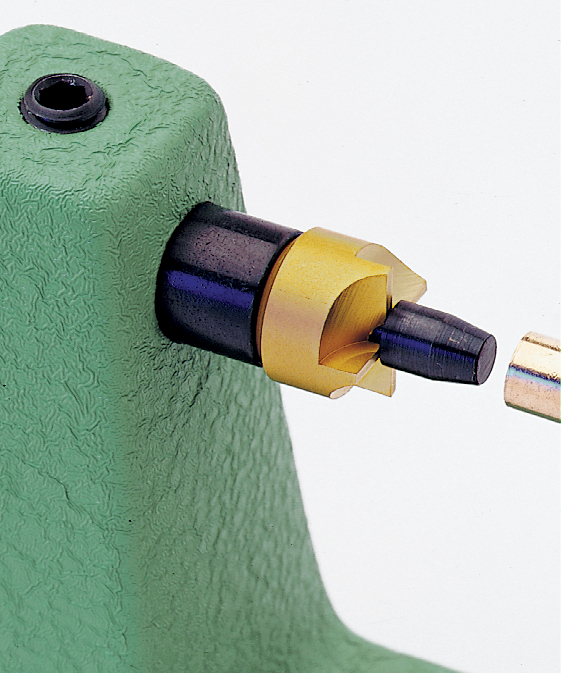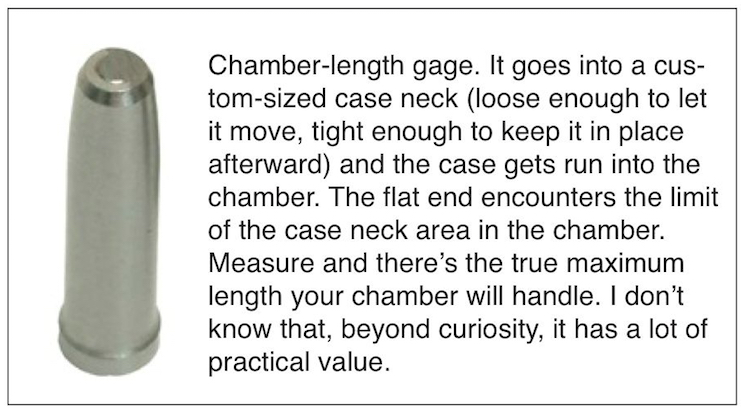We all have to trim bottleneck cases sometime. Question is when and how much, and then “how,” and here’s a place to start. KEEP READING
Glen Zediker
After going through that last series on keeping up with changes in cases resulting from their use and reuse, “flow” was a culprit behind the majority of detrimental changes. That is: Brass flows during firing. It moves from where it was to somewhere else. Since there’s a finite amount of material in a case, one place is getting thinner and another is getting thicker. The sources of the material, where the flow starts and where it stops, are primarily case necks and case heads.
To completely finish up on all this, the most obvious indication that there’s flow is measuring case lengths from base to mouth.


First, and very (very) important: The ONLY time to check case length, or to trim cases, is after they have been sized! A fired, unsized case will be shorter than it was going in. The reason is because of the expansion in the case that resulted from firing. When the expanded areas are squeezed back to spec by a sizing die the case gets longer as it gets smaller in diameter, same as rolling a ball of modeling clay out on a table. After sizing is also the only time we can we know that the case shoulder area is consistent in dimension.
You’ll see two length figures published for your cartridge of choice: maximum length and trim-to length. Published trim-to length is usually 0.010-inches under what’s listed as maximum.
I got a gage umpteen years ago that could indicate the maximum case length a chamber could accommodate — technically, a “chamber length gage.” Man. I checked the chambers in my main rifles and found that they were all well more generous than the SAAMI-maximum. That didn’t really mean a lot, in fact, to how I proceeded. And it also didn’t mean I can advise ignoring the potential for danger in exceeding SAAMI-maximum. It just pointed out that there are differences in chambers, gun to gun, and at least showed me that not exceeding max stated length should easily keep you safe.
If a case got too long, exceeded the amount of room given to it in the chamber, that would be a safety problem! The bolt may not close fully. And, if it did, the extra length would create a pinching-in constriction, and that would spike pressure.
We can easily imagine that there’s an influence from relatively longer or shorter case necks in their influence in consistently encasing the bullet. And I’m sure we’d be right. Trimming cases all the same should mean that all the case neck cylinders are the same height. Someone looking to maximize accuracy is liable to get worked up about that enough to trim each firing. I trimmed my tournament cases each use. And, no, none were remotely approaching maximum length. It’s reasonable to further suppose that more or less retention will influence velocity consistency.
Another performance asset may or may not happen, depending on the trimming tool chosen. But. A good trimmer will square the case mouth. I’ve seen a many new cases with a “half-moon” cut after trimming. A square case mouth helps a bullet start and finish straight when it’s seated.

My routine for this sort of “accuracy-oriented” case trimming is simple — tedious, but simple. I don’t measure each case. I just run them all through a trimmer set to “some” length. Some are trimmed more or less, some just show a bright scuff on one little bit of the case mouth, but they are then all the same length. If I can’t prove it in group sizes, it sho does set my mind at ease that all the cases are holding all the bullets more nearly the same.
For those rifles that aren’t tournament guns, the only concern is that none, indeed, become too long. Those I will check at that “4-firings-in” point. Some may have reached SAAMI-maximum, most won’t have, but all will be longer than when started. I start them at a figure close to suggested “trim-to.” Stop and think about it, and if there’s been overall a 0.010-inch length increase, that’s significant.
As with all things associated with use and reuse in semi-autos compared to bolt-actions, cases are going to grow more and faster in a gas-gun.
Another instance where it’s important to keep up with case lengths, and that, again, really has to do with making them all the same, is for those who crimp (with a conventional cannelure method).
Now, there’s zero harm in using a longer “trim-to” length, and that may be more popular than my method. These lengths are stated in reloading manuals. Keeping up with it over years, I’ve seen no difference in the rate of lengthening trimming longer or shorter; I trim “shorter” solely as a matter of consistency over the (short) life of my semi-auto cases.
Next time more about the tools.
Get started shopping HERE
The preceding is a specially-adapted excerpt from Glen Zediker’s book Top-Grade Ammo.
Glen’s books, Handloading For Competition and Top-Grade Ammo, are available at Midsouth HERE. For more information about other books by Glen, visit ZedikerPublishing.com
Glen’s newest book, America’s Gun: The Practical AR15. Check it out HERE!











